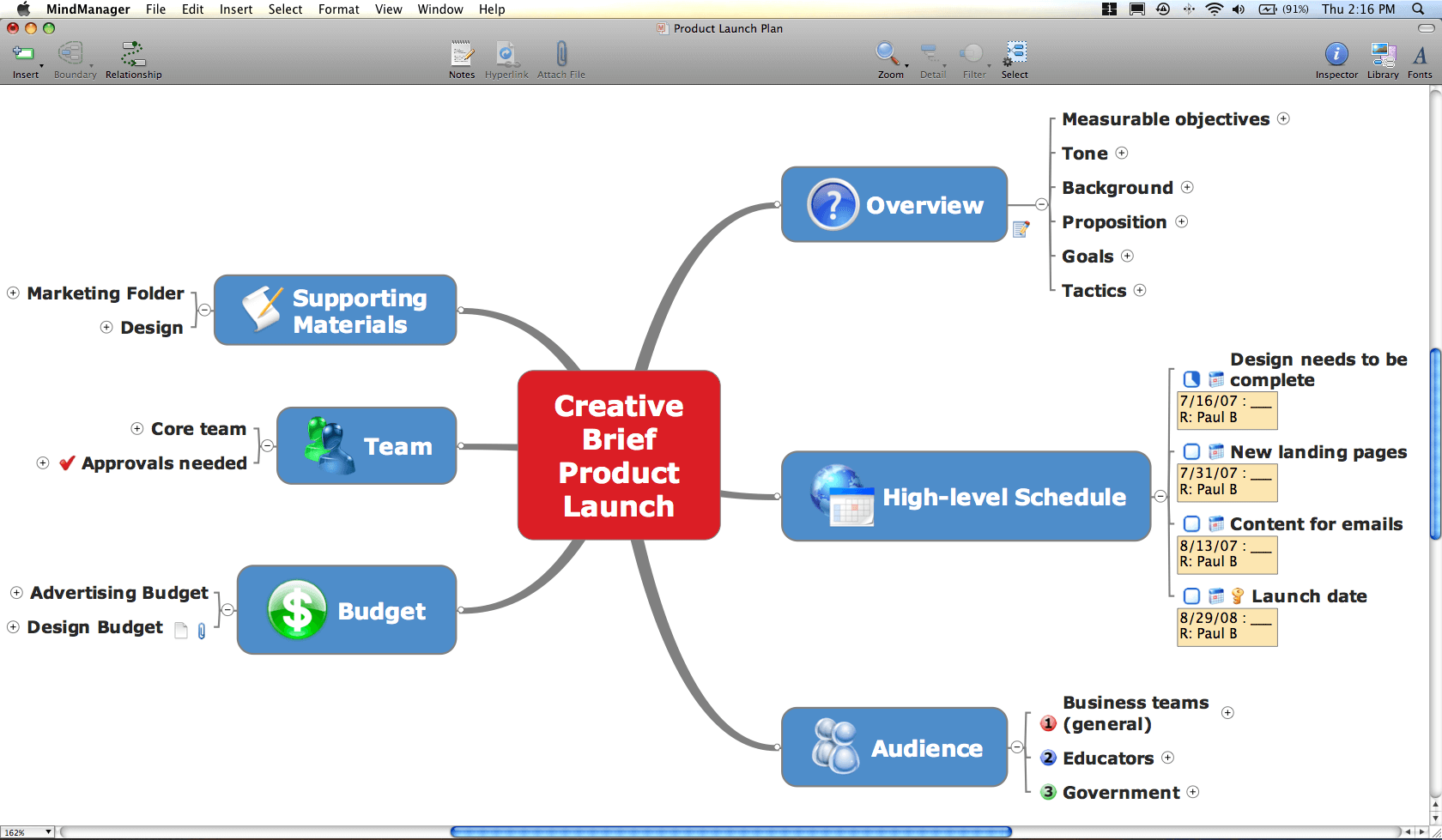

For more information, see Add-ins and transformations. Simple outlines (only in the Save as type list) are enabled using the Transformations options. There are a wide variety of options that control the behavior of MindManager desktop. If the export you want to use does not appear in either place, you must enable the corresponding export add-in using the Add-ins options. This makes it easy to move the map to a different location (for example, to a central location on your intranet, or to a different system if you are doing a presentation on a different computer). You can use this command to package a single map and its linked documents in Map View or for multiple maps in Linked Maps View. Measurement units: The measurement unit type (mm, cm, or in) is used primarily by. Drag topics around, draw connections between different ideas, and park-related notes, links, and files where they belong it all stays contained in one clear, easy-to-navigate map. It lets you quickly capture ideas and information, then organize and contextualize them in the same place. A Wizard guides you through the steps to package the maps. You can display up to 15 entries in the Recent Files list in the File menu. Mindjet MindManager works like a virtual whiteboard.
#Mindjet mindmanager example .mm file zip
The Pack and Go command is used to add maps, and optionally, linked documents to a ZIP file. Because OPML is a very simplified format, the resulting OPML map will be grayscale with icons and other visual markers removed. You can export your entire map or only a portion of it to an OPML document. You can export your entire map or only a portion of it to a CSV (comma-separated value) file that can be imported by Excel and many other popular spreadsheet programs. For more information, see Work with Microsoft Project. You can also export a map or selected topics to Microsoft Project. You can also export your map to a Microsoft Excel spreadsheet with your choice of icon, tags, map elements, properties, content order, layout, formatting and header options. You can export your map to a Microsoft Word document with your choice of outline settings, map elements, Word template, link, graphics, and header and footer options. In many applications you can paste your map, or selected topics, as a bitmap image. You can export maps to various graphics formats: BMP, GIF, JPEG, PNG, WMF, and EMF.


You can modify the default HTML5 export options. Xmind supports multiple file formats such as MindManager, FreeMind, MindNode, Word (DOCX only), Markdown, OPML, TextBundle, Lighten, etc. The exported map is self-contained and interactive: Viewers can expand and collapse branches, view notes, attachments, links, comments, and more. When you create an HTML5 map, MindManager exports the current map as an HTML file in HTML5 format that can be viewed independently from MindManager. You can create read-only, interactive files in HTML5 format. You can export your map - or in some cases just the selected topics - to a variety of other formats.


 0 kommentar(er)
0 kommentar(er)
